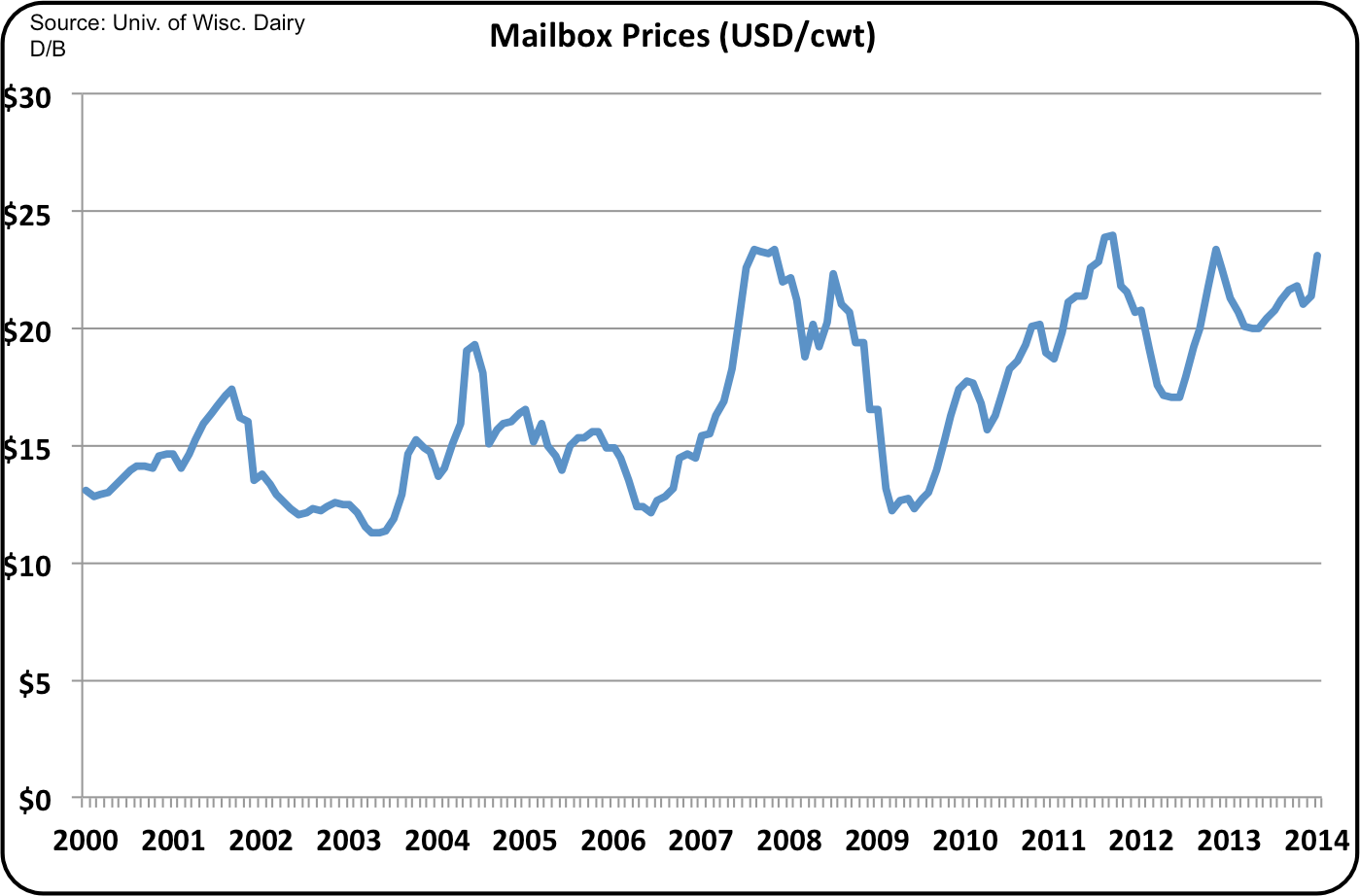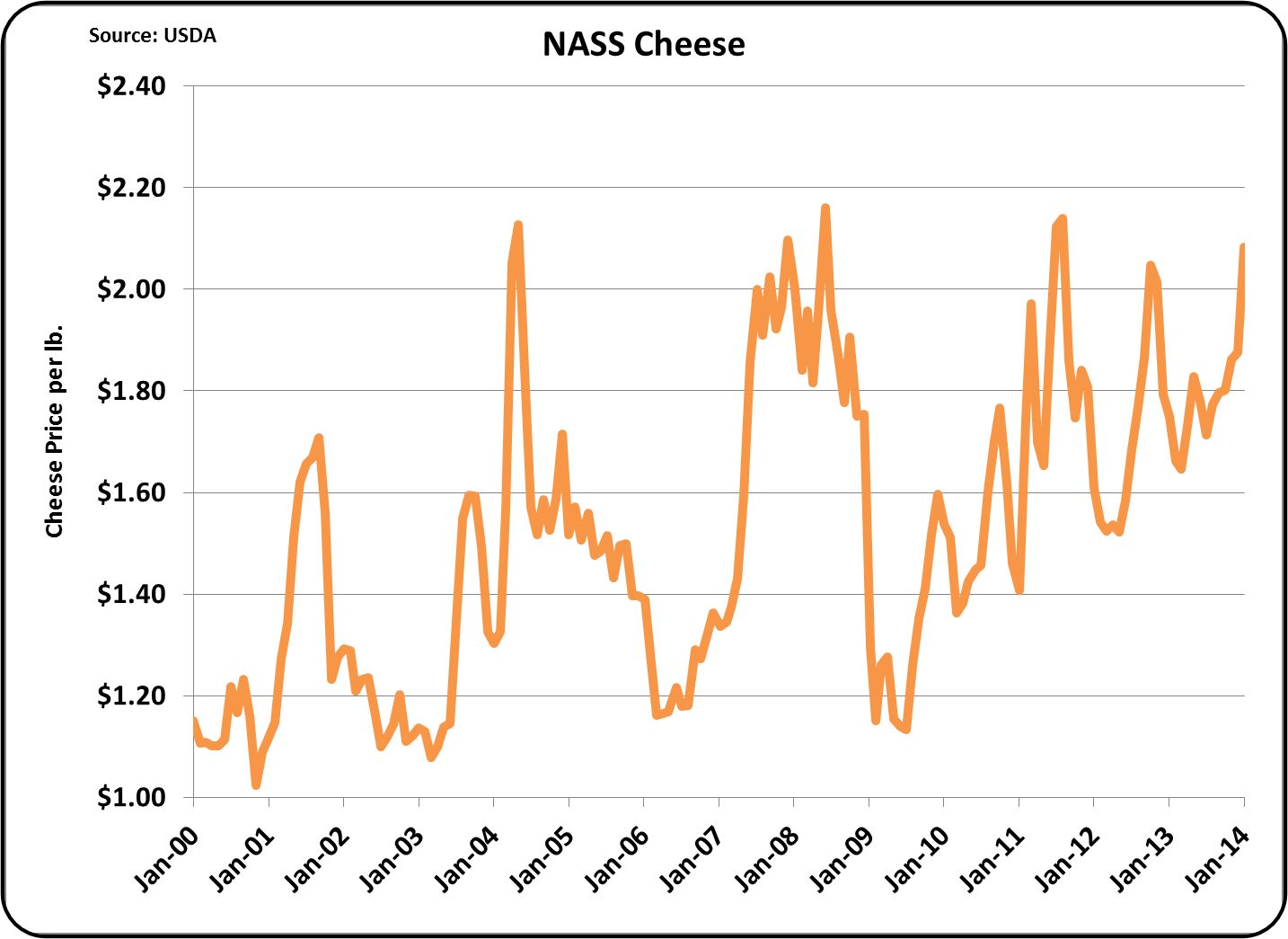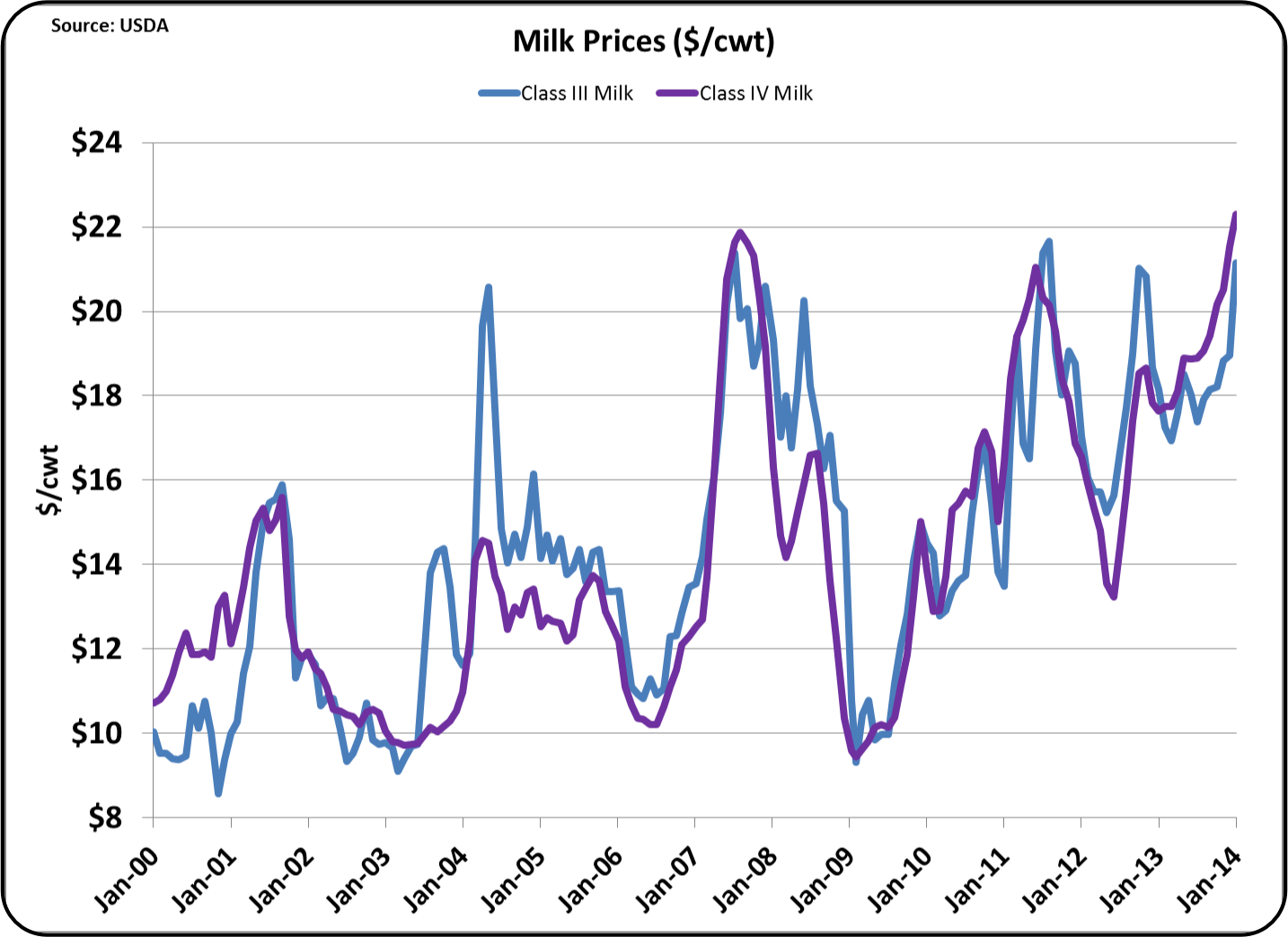US milk producers are getting paid near record prices for milk.
The chart below shows the 'Mailbox Price' for all producers in the Federal Milk Marketing Orders (FMMO) and California.
The 'Mailbox Price' simulates the average check that is sent to dairy producers. The January 2014 'Mailbox Price' was $23.12 per hundredweight (cwt). This was not a record, but for dairy producers in the US it was near to the highest prices ever received.

Over 50% of the dairy producers are paid on the component system and most of the other producers are paid based on similar pricing models.
There are four classes of milk in the FMMO system:
Class I: Milk used for beverage purposes.
Class II: Milk used for soft manufactured dairy products like ice cream, yogurt, and cottage cheese.
Class III: Milk used to make hard cheeses and cream cheese.
Class IV: Milk used for dry milk products and butter.
Class III, milk for hard cheeses, is the largest class by volume and it is the basis for the initial payment to producers paid on components. The Class III price is based primarily on the wholesale price of cheese as measured by the National Agricultural Statistical Survey (NASS).
The January 2014 price for cheese is $2.08 per pound (lb) or $4.59 per kilogram (kg) which is not a record, but is also close to the highest price every recorded.
Increased exports are helping to drive demand. Based on the current cheese markets, a higher and perhaps record price is expected for February.

Class IV milk is used for nonfat dry milk (NDM) and skim milk powder (SMP) and the producer price for this milk is based on the price of NDM and SMP.
In 2013, 58% of NDM and SMP was exported, so the international markets primarily drive the price. International demand has been strong and the price for NDM and SMP has hit near record highs in the US. As a result, the Class IV price is at record levels.

The Class III or Class IV milk price - whichever is higher - determines the price of the second biggest milk class, Class I or beverage milk.
It is unusual for Class IV milk to be more valuable than Class III milk, but the current strong international demand for NDM and SMP has driven the Class IV price well above the Class III price as shown above.
In turn, the Class IV milk price is driving Class I and II milk prices to near record levels.

In February 2014, milk prices are expected to hit new record highs.
John Geuss (left) is the editor of US dairy commodities blog, MilkPrice.
For John's detailed month-by-month examinations of American dairy commodity movements, visit MilkPrice.
